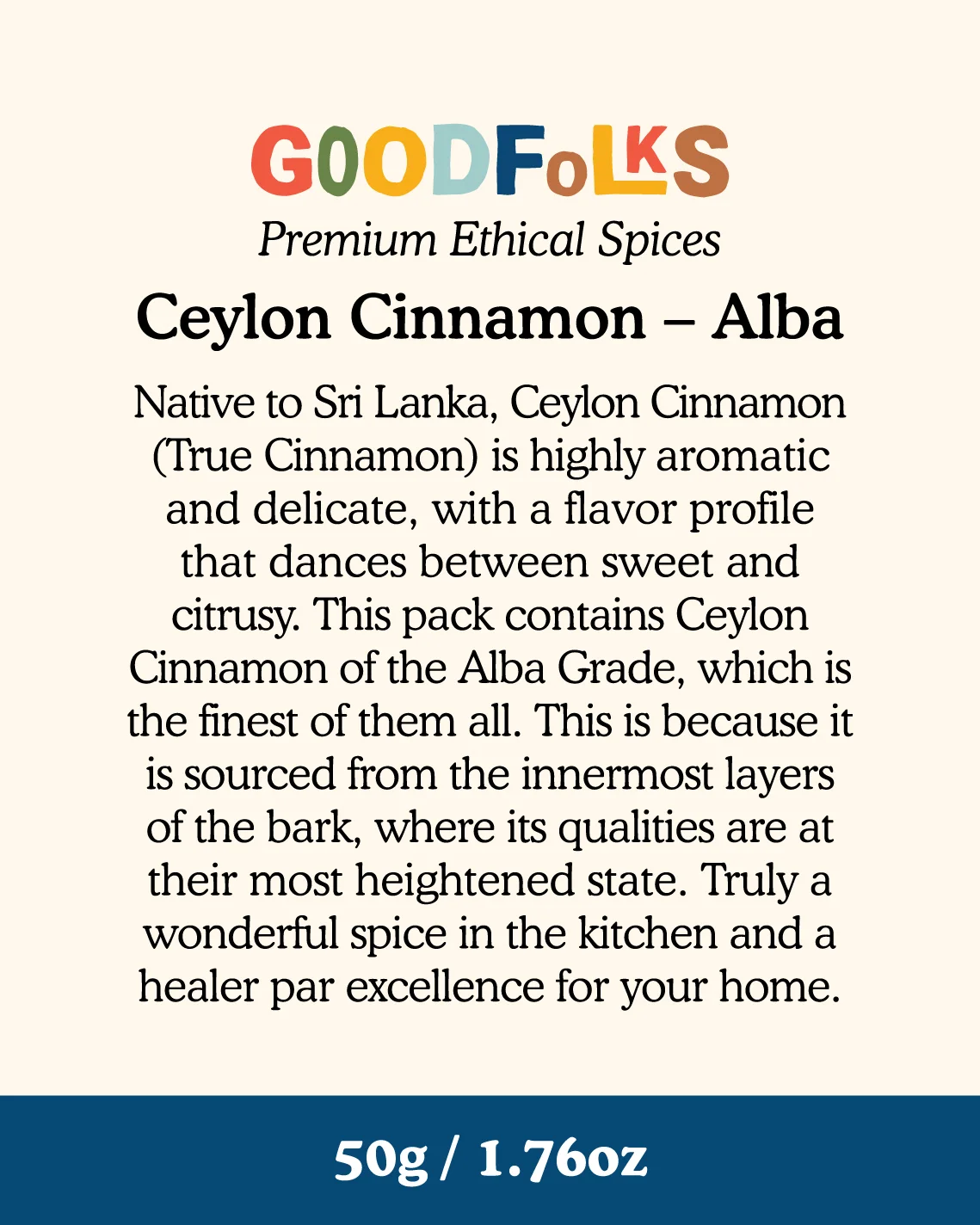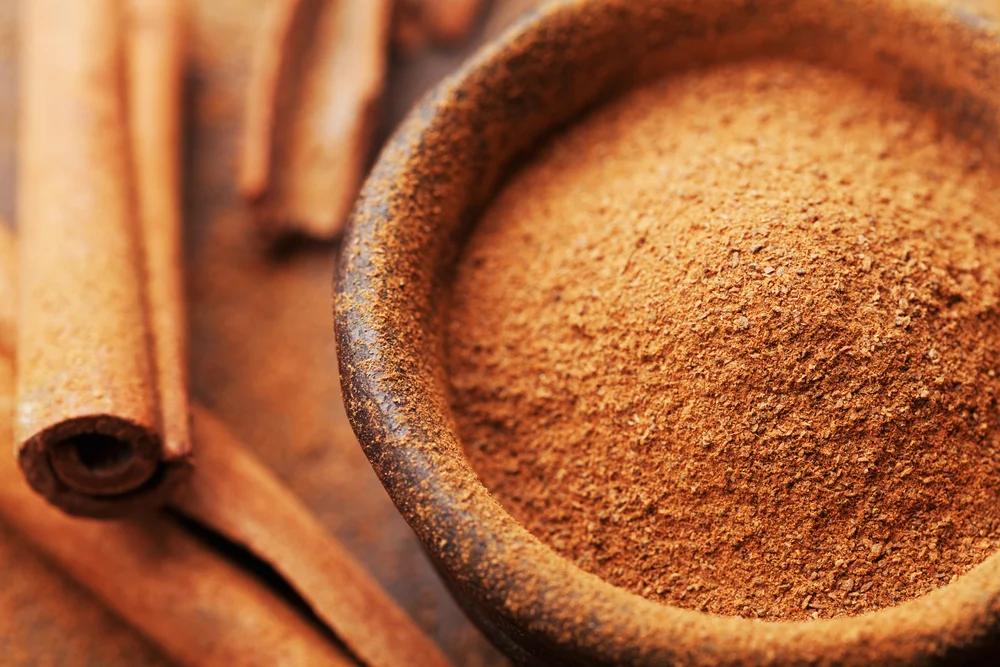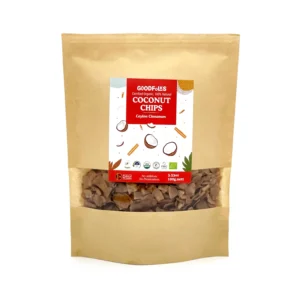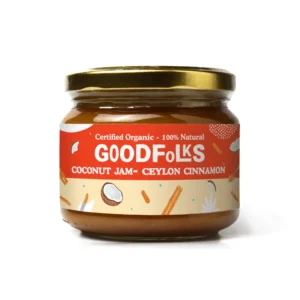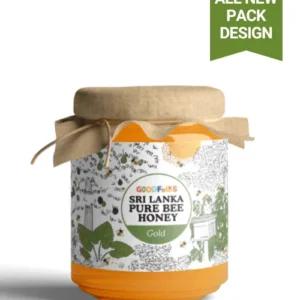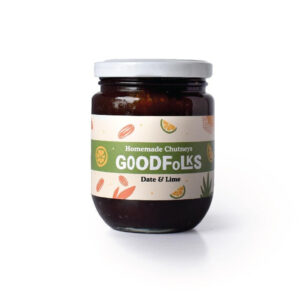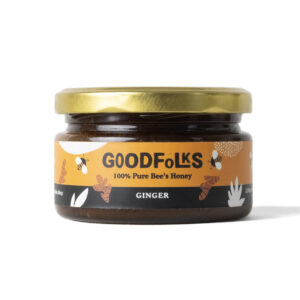Description
Superior and Ethically Sources Ceylon Cinnamon from Goodfolks
Cinnamon is a beloved spice around the world, prized for its warm, sweet flavor and its many health benefits. But not all cinnamon is created equal, and one variety in particular stands out as the best of the best: Ceylon cinnamon.
Ceylon cinnamon, also known as true cinnamon, is native to Sri Lanka and has been cultivated there for centuries. Its history is intertwined with the history of the country itself, and its unique properties have made it a sought-after commodity around the world.
Cultivation of Organic Ceylon Cinnamon in Sri Lanka
Sri Lanka is the only country in the world that can boast a long history of growing Ceylon cinnamon. The spice was first introduced to the island by Arab traders in the 7th century, and it quickly became a valuable export crop. By the 16th century, cinnamon was the primary export of Sri Lanka, and the Portuguese, Dutch, and British colonizers all fought for control of the spice trade.
Today, Ceylon cinnamon is still grown in Sri Lanka, with the majority of production taking place in the southwestern part of the country. The trees are typically grown on small family farms, and the cinnamon bark is harvested by hand.
Unique Soil and Climate Conditions
One of the reasons that Ceylon cinnamon is so special is that it is grown in unique soil and climate conditions. The soil in the southwestern part of Sri Lanka is sandy and slightly acidic, which is ideal for growing cinnamon trees. The area also experiences a significant amount of rainfall, which helps the trees grow.
The climate in Sri Lanka is also different from that in other countries where cinnamon is grown. The island is located near the equator, which means that it experiences year-round warm temperatures and high humidity. This climate is ideal for growing cinnamon, as it allows the trees to grow quickly and produce high-quality bark.
Certification by the European Union
In recognition of its unique properties and high quality, Ceylon cinnamon has been certified by the European Union with a Geographical Indication (GI) designation. This means that only cinnamon grown in Sri Lanka can be labeled as Ceylon cinnamon, ensuring that consumers are getting the real deal.
Health benefits of Ceylon Cinnamon (True Cinnamon)
- Lower coumarin content: Ceylon cinnamon has lower levels of coumarin than other varieties of cinnamon, such as Cassia cinnamon. Coumarin can cause liver damage in high doses, and Ceylon cinnamon is considered safer for consumption. (Source: Journal of Agricultural and Food Chemistry)
- Anti-inflammatory properties: Ceylon cinnamon contains compounds with anti-inflammatory properties, which may help reduce inflammation in the body and improve overall health. (Source: Journal of Medicinal Food)
- Blood sugar control: Ceylon cinnamon may help improve blood sugar control in people with type 2 diabetes by increasing insulin sensitivity and reducing insulin resistance. (Source: Diabetes, Obesity and Metabolism)
- Antimicrobial activity: Ceylon cinnamon has been shown to have antimicrobial activity against a range of bacteria, fungi, and viruses. It may help prevent infections and promote wound healing. (Source: Journal of Medicinal Food)
- Antioxidant activity: Ceylon cinnamon contains high levels of antioxidants, which can help protect cells from oxidative damage caused by free radicals. (Source: Journal of Agricultural and Food Chemistry)
It is important to note that more research is needed to fully understand the health benefits of Ceylon cinnamon, and it should not be used as a replacement for medical treatment.
Get to know the Ceylon Cinnamon Grades
Ceylon cinnamon is typically graded based on the thickness and quality of the bark, which determines its flavor and aroma. Here’s a simple explanation of the different grades:
- Alba: This is the highest quality grade of Ceylon cinnamon, also known as “true cinnamon.” It has a delicate flavor, light color, and a smooth texture. It is made up of the thinnest and most delicate bark layers. (Diameter 8 -10m)
- Continental: This grade is slightly thicker and darker in color than Alba, with a stronger flavor and aroma. It is made up of slightly thicker bark layers than Alba.
- Mexican: This grade is darker and has a more pungent flavor than Continental. It is made up of slightly thicker bark layers than Continental.
- Hamburg: This grade is the thickest and darkest of all Ceylon cinnamon grades, with a strong, spicy flavor. It is made up of the thickest bark layers.
When placing your order for Goodfolks Organic Ceylon Cinnamon Quills, we will check with as to the grade and specifications, alongside providing samples for your consideration.
And here’s how you can use Goodfolks Organic Ceylon Cinnamon Quills:
- Infuse into hot drinks: Add a cinnamon quill to your coffee, tea, or hot chocolate for a warm and comforting flavor.
- Add to baked goods: Use cinnamon quills in place of ground cinnamon in baked goods like cakes, cookies, and muffins. Simply grind the quills into a fine powder using a spice grinder or mortar and pestle.
- Flavor stews and curries: Add a cinnamon quill to stews, curries, and other savory dishes for a warm, slightly sweet flavor.
- Create homemade potpourri: Combine cinnamon quills with other spices, dried flowers, and citrus peels to create a natural and fragrant potpourri.
- Infuse into oil or vinegar: Combine cinnamon quills with olive oil or vinegar for a flavorful and aromatic dressing or marinade.
- Make mulled wine or cider: Add cinnamon quills to red wine or apple cider, along with other spices like cloves and nutmeg, for a warming and flavorful drink.
- Brew a tea: Boil cinnamon quills in water to create a fragrant and warming tea that is believed to have a variety of health benefits.
- Decorate your home: Use cinnamon quills to create a rustic and natural decoration by placing them in a vase or tying them together with twine.
If you are seeking high quality, organic certified and ethically sourced Ceylon Cinnamon from Sri Lanka, contact us for a quote and samples.




